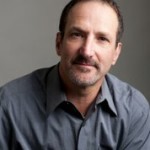
By Michael Berkman | director of the McCourtney Institute for Democracy
In an interview with Oprah Winfrey last month, First Lady Michelle Obama somberly reflected on the country in the aftermath of the presidential election. Winfrey was an early and enthusiastic supporter of the current president who built his campaign on hope. “Now,” the First Lady told her, “we’re feeling what not having hope feels like.”
But is America really feeling hopeless? The Penn State McCourtney Institute for Democracy “Mood of the Nation Poll” allows ordinary citizens to tell us what is on their minds. In particular, the poll allows us to ask 1,000 Americans what it is that they are hopeful about.

Michael Berkman
Before the election, in September, Americans were not particularly hopeful. Only 34 percent indicated that they felt very or extremely hopeful. And 40 percent said “nothing” made them hopeful. In contrast, 77 percent of Americans felt very or extremely angry and 81 percent felt very or extremely worried. In sum, before the election, Americans felt very little hope, lots of anger and considerable concern.
Elections have a way of making people feel better about politics. Even those who voted for the losing candidate tend to feel a greater sense of political efficacy, a belief that their concerns are understood and can influence political affairs. Further, the end of the long campaign brings the tumult and the uncertainty to an end. Along with the peaceful transfer of power, this normally improves Americans attitudes about politics.
This was not a normal election: With its intensely negative tone, unpopular candidates and foreign interference, one might expect that things are different this year. But that is not the case. Rather, the end of this election, too, has made the overall mood of the public somewhat more positive.
The overall sense of anger and worry has decreased, while the percentage of people who were either very or extremely hopeful has increased from 34 percent to 44 percent. At the same time, the total percentage of people who said there was “nothing” they were hopeful about decreased to 28 percent.
However, the numbers also support the notion of a divided nation. Just like the First Lady, those who supported Hillary Clinton do not feel better. In fact, they have lost hope.
The figure below breaks down the percentage of people who said “nothing” makes me hopeful by the candidate they supported. Hope increased among those who supported third party candidates, Trump supporters and even those who did not vote. Only among Clinton supporters has there been a noticeable drop in hope.
For them, the percentage saying “nothing” made them hopeful increased by more than 10 percentage points. Nearly half of Clinton supporters are not hopeful about anything in our politics today.
But Trump supporters are hopeful that things are going to get better, and in particular that the economy will get better. Here are some quotes directly from Trump supporters about why they are hopeful:
– A 36-year-old white female homemaker from Texas with a high school degree said, “HOPEFULLY, America will go back to the way it was intended to be. There must be something good about it……there must be a REASON why so many people are scrambling to come here.”
– A 58-year-old white female in West Virginia working part-time emphasized the President-elect’s promises to bring back jobs, saying, “Trump is already keeping jobs here such as Ford and is going to be so good for the economy that the nation’s kids will have a choice of great jobs.”
– A retired 61-year-old white man in Massachusetts emphasized the change that he sees coming is “a bright new future with new ideas. President Trump will change the way things are done in Washington.”
– A 33-year-old African-American man with a high school degree living in Mississippi put it most succinctly: “Mr. Trump gives me hope beyond hope!!”
While the Penn State McCourtney Mood of the Nation Poll was not around in 2008, these words by Trump supporters do appear to echo feelings expressed by Obama supporters when he was first elected in 2008. In the liminal time between the election and inauguration day, so close to the exultation of triumph, when all is possibility, hope is easy to come by. Of course, once the hard slogging of governing kicks in, hopes are likely to modify, as they did for Obama’s supporters.
For now, hope is indeed in the air. But while the supporters of the presidential loser never feel good, the hopelessness for Clinton’s supporters, including that of the First Lady, does not have any clear referent. Will their despair dissipate as Trump moves into the day-to-day world of governing? Or will his decisions as president cause their feelings of hopelessness to continue? This is an important question for our nation going forward — one that we will be watching closely.





